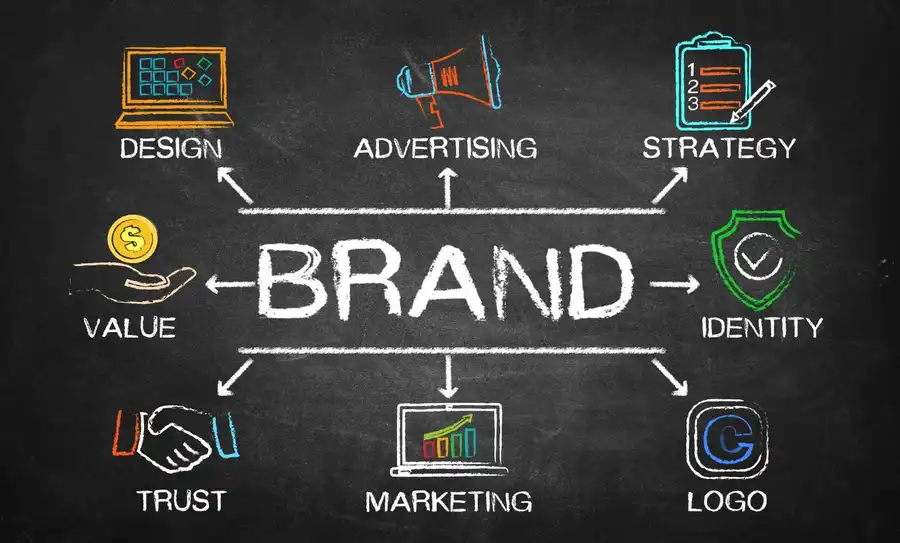The advertising world is undergoing a dynamic shift from traditional television advertising to OTT advertising. Audiences are increasingly using new online streaming platforms to consume video content.
As more people switch to streaming content, marketers notice and invest in OTT advertising. This article will look at seven of the most significant OTT advertising trends that are changing the advertising landscape.
What is the Future of OTT Advertising?
Over-the-top (OTT) advertising refers to streaming content on a device that bypasses traditional television. The devices most often used are connected televisions (CTV), laptops, tablets, and smartphones.
Streaming content platforms and services have been around for over a decade, but with the COVID-19 pandemic, subscriptions to streaming services have steadily increased and will only continue to do so. Digital marketers have taken notice of these consumer streaming trends and TV watching trends, with 57% of digital advertisers planning to increase OTT advertising spending.
To compete in this evolving digital landscape, advertisers will need to carve out space in their digital marketing budget for OTT digital advertising and familiarize themselves with the current OTT trends and have a fair understanding of the future trends in advertising.
1. Continued Expansion
With the increase in streaming channels and online viewing, modern OTT video advertising trends are taking over traditional television advertising. To compete in the current landscape, brands need to invest in OTT video advertising to reach consumers.
In the first quarter of 2023, Hulu reported 45.3 million paid subscribers, a 39.4% increase from the first quarter of 2021. In addition, a recent Hootsuite study found that 92% of internet users watch video content online weekly.
If you’re not currently investing in OTT advertising, you are missing out on a huge opportunity to connect with consumers. Viewers may choose what and when they watch their favorite programs with streaming services. This freedom allows OTT marketers to reach a broader, more targeted audience and also come up with an OTT retargeting strategy to bring back lost subscribers.
2. Know the OTT Video Basics
While OTT advertising continues to trend up, you need to know the essentials requirements for creating OTT video ads to comply with this new advertising channel. Format and length are the key components.
Format
Your video ad needs to look and sound good on all streaming devices. OTT platforms can and will place OTT video ads on multiple types of devices. Whether that’s a small smartphone screen, medium-size screens such as tablets and laptops, or large television screens, you want to ensure that OTT content scales appropriately for the device viewers watch your ad.
Length
Shorter is always better. Depending on the OTT platform, viewers may see skippable or non-skippable ads. Regardless of which type of ad experience viewers encounter, you want to create video content that is engaging and concise, with key messages early in the ad. If viewers can skip your OTT ad, they still see what’s most important.
While non-skippable ads can be 15 to 30 seconds in length, you still want to keep the video ad short. Even if consumers cannot skip an OTT ad, they can lose interest quickly and walk away from the device for a quick snack break.
Following a few key OTT essentials during production will allow you to ensure a comfortable and engaging viewing experience.
3. Hyper localization of Ads
A newly rising OTT advertising trend, geo-location is a powerful customer segmentation for relevance. Also known as “OTT local advertising,” local ads are experiencing incredible growth in the digital marketing landscape.
Let’s say you provide gutter cleaning services in Raleigh; you may choose to hire a local digital advertising agency to run a targeted ad to new homeowners in the area. Shrinking the geographic location of an ad allows you to focus on a smaller segment at a more cost-efficient price.
Focusing on a specific area allows businesses, especially brick-and-mortar stores, to share store location, special deals, and timely information with local, interested consumers.
4. OTT Advertising Goes Live
Live broadcasts airing on social media and OTT streaming services are becoming more commonplace. This OTT advertising trend provides a significant opportunity to reach large and new audiences. According to Lemonlight, social streams get two times more engagement than pre-recorded videos.
Benefits of live airing OTT advertising opportunities:
- Larger Customer Reach: Hundreds of thousands watch annual sporting events and award shows, a huge OTT advertising opportunity.
- Audience Research: Live streaming sites have a plethora of data regarding who is watching an event and OTT ad.
- Consistent Ad Exposure: Many live streaming events happen annually, ensuring reliable OTT video ad opportunities.
5. More Cost-Effective Than Traditional TV Advertising
Overall, advertising on traditional television is more expensive than OTT advertising. OTT advertising means you’re not wasting money on irrelevant audiences with no predefined times slots or geographic locations.
While traditional television is more time-consuming, a programmatic advertising approach allows you to automate the selection of where and when to advertise, eliminating the time-consuming and labor-intensive process of linear advertising.
OTT advertising benefits smaller brands with OTT platforms allowing you to set impressions with a one-time fee. Sites like Hulu offer this option with their self-serving bidding system. Self-serve platforms make OTT advertising more accessible for smaller companies.
6. Target Relevant Audiences More Easily
The more time subscribers spend on an OTT platform, the more personal information they provide. Personalization and relevant targeting are crucial OTT advertising trends.
Specific audiences are created using demographics, interests, devices, location, and behaviors. Digital marketers can then target specific audiences with a more personalized ad experience. Types of OTT ads that speak to a particular audience’s interests increase engagement and brand awareness compared to linear advertising.
7. OTT Dynamic Ads Increase Conversions
Throughout this article, we’ve mentioned the benefits of targeting the right audience and geo-location. In addition, OTT advertising allows you to reap the benefits of customized ads—boost conversion rates with dynamic ads.
Dynamic advertising is when the content of an ad changes depending on who is watching. These OTT new advertising trends are also known as “retargeting advertising.”
Once retargeting advertisements are set up, a consumer engages with an ad and visits a brand’s website. They are typically tracked and shown more relevant advertisements. Targeting specific ads numerous times leads to brand awareness and increased conversation rates.
In Summary
It is an exciting time for advertising with the increased options for targeted marketing and advertising trends. Digital marketers can create more targeted video ads and increase engagement while spending fewer ad dollars.
As audiences seek out personalized experiences, programmatic advertising will become the norm, not a trend, but play an important role in OTT expansion with regards to ad trends in 2024.
An advertising agency can help you stay on top of OTT current trends in advertising. From creative to execution to tracking, having an agency that is an expert in programmatic advertising by your side will ensure that your ads are the best they can be in new environment tv advertising trends.
New Path is a pioneer in programmatic advertising. and are well versed with the upcoming 2024 programmatic trends to execute campaigns that influence every step on the path-to-purchase.
The outcome? Accelerate campaign launch times and optimizations, and increase your overall return on investment. Ready to learn more about OTT advertising? Download our Complete Guide to Getting Started with OTT Advertising.
Blog Last Updated on 5 months by New Path Digital






